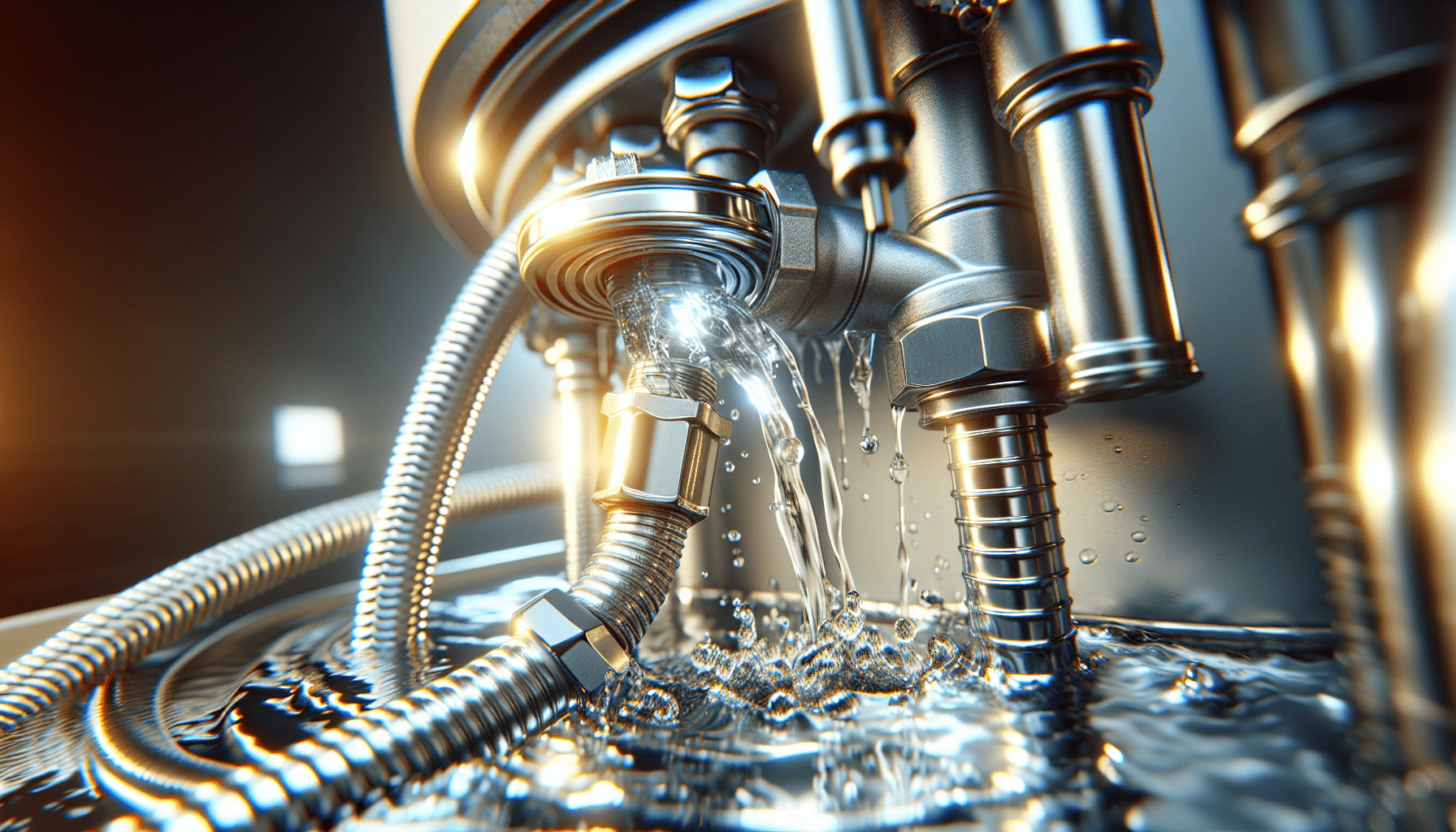Have you ever wondered how to properly maintain your water heater? Just like any other household appliance, your trusty water heater requires a bit of care and attention to keep it running smoothly. A little maintenance goes a long way in extending the life of your heater and ensuring your hot showers stay uninterrupted. Below, you’ll find a friendly guide to flushing and draining your water heater, sprinkled with tips to make the process easy and efficient.

Understanding Your Water Heater
Before we jump into the nitty-gritty of flushing and draining, it’s helpful to understand how your water heater works. Although gas and electric units differ in some aspects, their purpose remains the same: to provide you with hot water whenever you need it.
Components of a Water Heater
Here are the main components you’ll find inside your water heater:
- Glass-Lined Steel Tank: This is where the hot water is stored.
- Insulation: An environmentally friendly layer that helps keep the water hot.
- Dip Tube: Allowing cold water to enter the tank.
- Thermostat: This gadget works to maintain the desired temperature of the water.
- Heating Elements or Gas Burner: These heat the water, depending on your model.
- Drain Valve: Allows you to easily drain the tank when the time comes.
- Temperature & Pressure Relief Valve: A crucial safety feature that prevents overheating.
- Anode Rod(s): Essential for preventing tank corrosion, these rods attract the elements in the water that would cause metal erosion.
Understanding these components will serve you well as you tackle the task of maintenance.
Measuring Efficiency
If you’ve ever considered upgrading your water heater or simply want to ensure you’re getting the most out of your current one, you’ll want to know about Energy Factor (EF). This measurement provides insight into how efficient your heater is in converting energy into hot water.
| Energy Factor (EF) Rating | Efficiency Level |
|---|---|
| 0.60 or less | Below Average |
| 0.61 – 0.70 | Average |
| 0.71 – 0.80 | Above Average |
| 0.81 or higher | Highly Efficient |
In general, electric water heaters tend to score higher EF ratings than gas models. This can be a vital consideration for energy-conscious homeowners.
Why Should You Flush Your Water Heater?
You might be asking yourself, “Why do I need to flush my water heater?” Well, just like your car benefits from regular oil changes, your water heater benefits from periodic flushing to eliminate sediment buildup. Over time, minerals from your water can settle at the bottom of the tank, which can reduce efficiency and even lead to leaks or ruptures.
Flushing your water heater can help maintain its health and improve its performance. This simple task can help improve the quality of your hot water and extend the lifespan of the unit.
When to Flush Your Water Heater
You shouldn’t wait until there’s a problem to consider flushing your water heater. It’s generally recommended to flush the tank annually. However, if you live in an area with particularly hard water, you may need to do it more frequently.
Signs That It’s Time to Flush
- Discolored Water: If you notice rusty or murky water, it’s a sign there may be sediment buildup.
- Unusual Noises: A popping or rumbling sound when the heater operates can indicate sediment at the bottom.
- Reduced Hot Water Supply: If it seems like your hot water runs out too quickly, sediment may be restricting the tank’s capacity.
Recognizing these signs can help you determine when to take action.
Getting Started: Safety First!
Safety should always be your number one priority when working with appliances. Follow these steps before you begin flushing and draining your water heater:
-
Turn Off the Power:
- Electric Water Heater: Go to your circuit breaker panel and switch off power to the heater.
- Gas Water Heater: Set the gas switch to “pilot.” This will turn off the heat while keeping the pilot light lit.
-
Shut Off the Cold Water Intake Valve: This valve is usually located at the top of the heater. It’s essential to prevent any additional cold water from entering the tank as you drain it.
-
Open a Hot Water Faucet: Doing this helps vent the system and allows the tank to drain more quickly. Open a faucet in your home, preferably one closest to the water heater.
Preparing the Equipment
You’ll need a few things before starting the actual process:
- Garden Hose: A standard garden hose will do just fine.
- Bucket (Optional): If you don’t want the hose to drain outside, you can use a bucket to catch the water.
- Gloves and Safety Glasses: Although it’s not strictly necessary, it’s good to protect yourself from splashes.
Having everything ready will help make the process smooth and straightforward.

Step-by-Step Guide to Flushing and Draining Your Water Heater
By now, you’re probably ready to dive into the actual mechanics of flushing and draining your water heater. Let’s break it down step by step.
Step 1: Turn Off the Water Heater
Before anything else, make sure the power (if electric) or the gas (if gas) is turned off. This is essential for your safety.
Step 2: Shut Off the Cold Water Supply
Locate and shut off the cold water intake valve on the top of the tank. Turning it off prevents any new water from entering the tank as you drain.
Step 3: Open a Hot Water Faucet
By opening a hot water faucet somewhere in your home, you allow air to enter the plumbing system, helping the water in the tank drain out faster.
Step 4: Connect a Garden Hose
Next, you need to attach a garden hose to the drain valve, which is typically located at the bottom of the tank. Run the hose to an outdoor space, a floor drain, or into a bucket. Positioning is key here to avoid any mess.
Step 5: Open the Drain Valve
Open the drain valve either by turning the handle or twisting it counterclockwise, allowing water to flow through the hose. You should expect about a gallon per minute to drain out.
Step 6: Check Sediment Levels
After the tank has been draining for a time, feel free to fill a glass with the water being drained. Looking for any sediment is crucial. If you notice substantial debris, it’s time to give it a good flushing.
Step 7: Flush the Tank
Once the tank is mostly drained, close the drain valve and remove the hose. Now you’re ready to refill the tank. Open the cold water supply valve to allow fresh water into the tank. Let it run for about five minutes. While you’re doing this, the new water will stir up any remaining dirt and debris, helping to flush the tank effectively.
Step 8: Close the Drain Valve and Disconnect the Hose
After flushing, close the drain valve at the bottom of the tank. Once the valve is secured, it’s time to disconnect the garden hose and ensure there are no leaks.
Step 9: Restore Power or Gas
Finally, turn the power back on at the circuit breaker (if electric) or switch the gas back to “on.” Allow the water heater some time to heat the water to your desired temperature.
Final Thoughts on Water Heater Maintenance
Keeping your water heater in good shape can lead to fewer repairs and a longer lifespan for the unit. Following the appropriate steps can save you money in the long run while ensuring that your hot water needs are consistently met.
Should you need to perform this task again, remember that regular maintenance is the best way to keep everything running smoothly. As with many things in life, a little attention here and there can make all the difference.
If you keep an eye on the signs that your heater needs attention and perform the maintenance you’ve just learned, you’re well on your way to maintaining a cozy home filled with steaming hot water. Now go ahead, give your water heater the love it deserves!

